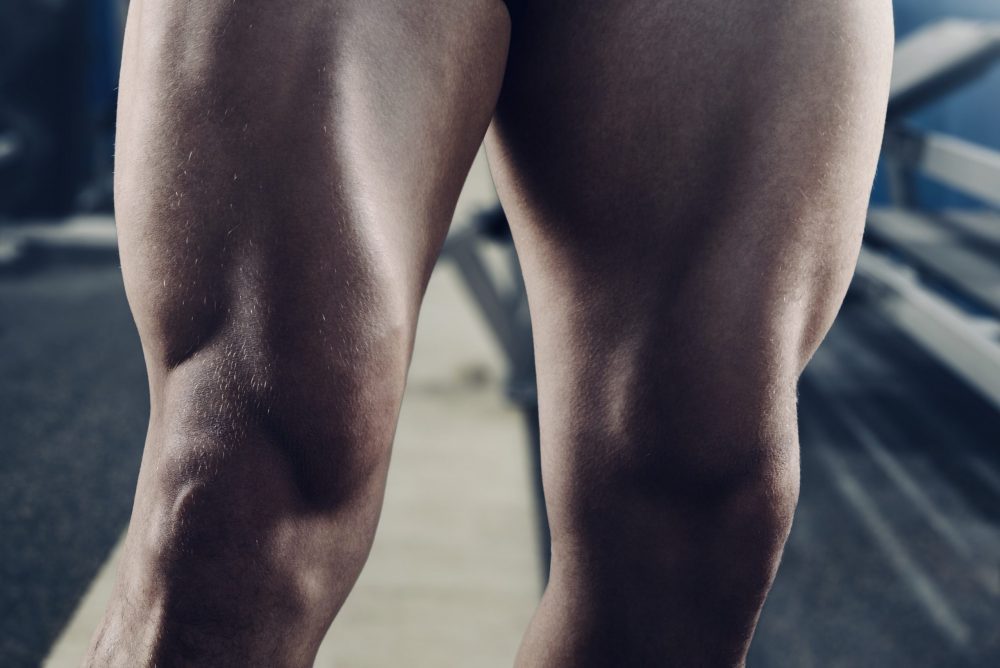Sissy squats aren’t for sissies. If you’ve ever tried them you’ll agree. They make men with tree trunk legs cry, and women with big squat numbers wince at the sight. They’re one of the best leg and knee strengtheners out there, while packing some sizeable meat on your quads. They also require very little to no equipment, which makes them ideal for home or crowded gyms.
Sissy squats demand respect. If you jump straight in to them chances are high they’ll bite you in the ass (or knees!). Especially if you’ve got a history of cranky joints, they can be a trigger knee pain and inflammation. But don’t blame the sissy.
Smarter progression of sissy squats will improve quadriceps strength and size, while building durability of both knee tendons. Having no business doing them in the first place, or just jumping straight in to them is a recipe for cranky knees and inhibited muscles. Here’s how to progress them for bigger legs and a more resilient lower body.
Build range of motion over time
It’s a common belief that “knees over toes” will somehow cause your knees to rot and fall off. This couldn’t be further from the truth. Every time you ride a bike or go up some stairs just check out what your knees are doing – Knees over toes isn’t the issue! Instead, just consider that when it comes to “full” sissy squats it’s a range of motion you’re likely not ready for.
Sissy squats take your knees in to a degree of flexion that they’re not used to. The connective tissues around your knees need to get stronger and your quadriceps need to get used to being challenged at greater muscle lengths.
Start your sissy squat progression by using a reduced range of motion. As your knees and quads learn to handle new territory, you’ll naturally be able to handle more depth over time. The best way to do this is to use something like an airex balance pad or two as a depth gauge. If you need to start even higher then no problem, just find a range of motion you can train pain-free. Focus on quality reps and work up to sets of 12-15 reps.
Before I continue, did you know I cover these workouts and much more in my 88 glutes ‘n’ hammies guide? Click here to learn more.
Use a dowel for more stability
Even partial range sissy squats will build an impressive set of wheels. But in order to maximize their benefit you’ll want to get as close to the floor as you can over time. This loads your quads through greater muscle lengths, which is an extremely potent muscle growth stimulus. It’s also great for bulletproofing your quads and knees from future injury.
Using a dowel or a hand placed on the wall helps to add stability. Not only are sissy squats easier to control, but this method is arguably better for building muscle. Adding stability will increase quadriceps output since you’re asking less from your stabilizers. One important thing to note is that the dowel or wall are not to be used to assist lifting yourself up. They’re only there as something to stop you from toppling over.
If you want the benefits of a more unstable variation then free standing sissy squat are great too. It just depends on what your goals are.
Make sissy squats harder
Sissy squats are a true quads isolation exercise with little activation of your glutes and hamstrings. They work your quadriceps hardest in their lengthened position at the bottom of the exercise. This is unlike a leg extension machine, for example, which emphasize your quadriceps in their shortened position when your knees are straightened. Also, unlike a leg extension it’s important that in order to get the most out of sissy squats your hips should stay in a relatively extended position throughout.
Keeping your hips relatively straight during sissy squats allows for greater loading of your quadriceps. Straighter hips further emphasize the lengthened position, in particular increasing recruitment of your rectus femoris. By pausing at the bottom of each repetition you can get the most out of the loaded stretch at the bottom.
Accentuating the lowering (eccentric) phase of the sissy squat acts to increase eccentric time under tension and make them even harder. Doing this capitalizes on the greater eccentric strength you’ve available, activates more high-threshold motor units, and increases mechanical tension. All good stuff for building muscle and strength. Try taking anywhere between 4-6 seconds to lower, and add a 1-2-second pause at the bottom of every rep to hit you quads hard. The eccentric will be great for you tendon health, too.
Other ways to progress sissy squats
We won’t cover these fully today but it’s worthwhile giving them a brief mention as they are some you might often see floating around the web.
Deficit Sissy Squats – These add even greater range of motion and demand good knee health and quadriceps strength at larger lengths. Typically these are done by starting from a platform and lowering your knees down to a level below it.
Banded TKE Sissy Squats – Regular sissy squats fall short in their ability to activate your quadriceps fully at the top of the movement. Having a band looped behind you knees is just one way to overcome this. Doing this should be a progression from using your own bodyweight and achieving a full range of motion. Alternatively work through reduced ranges of motion and use the band to load your quads more in their shortened position (typically referred to as terminal knee extension). This might also get a little more activation from your VMO (teardrop) muscle just above your knee.
Weighted Sissy Squats – Do what they say on the tin. Once you’ve achieved a level of depth then you might want to add weight. One of the easiest methods is with a dumbbell in one hand and hanging. Feel free to experiment here to find what’s most comfortable.
Drop-sets – If you’re more advanced and really sadistic, you can use the information above to create a pretty horrific drop-set. Before you go here’s one giant mechanical drop-set to think about:
- Sissy squat with a 4110 tempo (4’s lower, 1’s pause at the bottom, 1’s raise)
- Straight to, Sissy squat with a 2010 tempo (2’s lower, 1’s raise)
- Next, Sissy squat with a reduced range of motion (place one airex pad on the floor)
- Finally, Sissy squat with further reduced range of motion (optional, place two airex pads on the floor)
- Good luck walking down the stairs for the next week!

